by Valentina Biondini, art and literature amateur
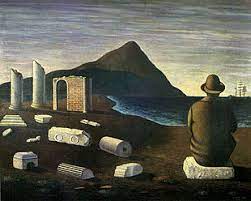
If you ask Who’s Next? I answer that my name is Arturo Nathan and I was an Italian painter of Jewish origin. For the themes I deal with in my painting I have been defined as “the solitary contemplator”, precisely because of the poignant way in which I was able to transpose the contemplation of the end of things onto the canvas. Here’s my story..
Dr. Edoardo Weiss, my psychoanalyst, one day suggested me to start painting. It was the year 1919, the First World War had recently ended, but we would carry his legacy with us for a long time to come, in body and spirit.
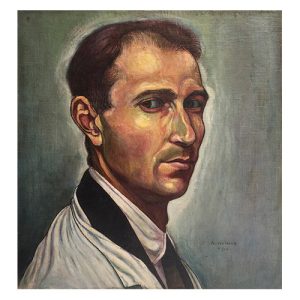
I wasn’t yet thirty years old, but I was in a state of melancholy so profound that it bordered on pathological. This is why I decided to turn to him. And I really followed his advice. I had already attempted to enter the commerce sector, at the behest of my father Jacob, a trader by profession, but my career was nipped in the bud due to my total ineptitude towards the business world. I later enrolled in the philosophy faculty of Genoa. To be clear, nothing could be further from my previous experience.
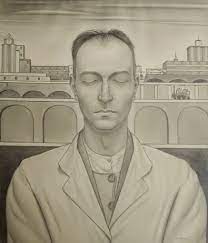
In any case, I liked Doctor Weiss’ idea so much that in 1921 I opened my first artistic studio in Trieste, my hometown. Only recently had I begun to frequent the ateliers of the painters Slataper and Zangrando, and just as recently I had enrolled in the “Free Nude School” of the Trieste artistic club. In other words, I was almost completely self-taught and, moreover, I came to art a bit by chance. Nonetheless, the results I achieved on an artistic level shortly thereafter were more than positive. The 1920s were for me a decade of intense experimentation aimed at searching for my stylistic autonomy. My debut took place in 1924 when I presented my Autoritratto at the exhibition of the artistic club of Trieste. In 1926 I exhibited the Autoritratto con gli occhi chiusi at the Venice Biennale, while in 1927 I presented a second self-portrait, known by the title of Incantatore o Asceta, at the First exhibition of the fine arts union of the artistic club of Trieste.
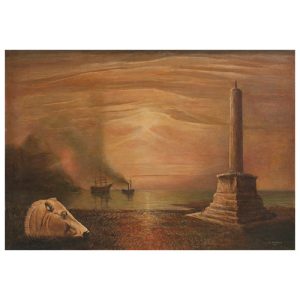
However, it was in 1925, during a stay in Rome, that I met the maestro De Chirico in person for the first time, whom I already admired enormously. The result was a relationship of respect and affection on both sides. Also it is undeniable how this partnership profoundly influenced my subsequent artistic production. It is no coincidence that from then on I began to be counted among the exponents of metaphysical painting. In this regard, my works Solitudine (1930), Il Cavallo Morente (1932) and Nave a rimorchio (1934) are eloquent.
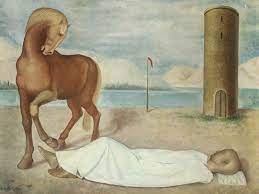
In 1929 I took part in the collective exhibition in Milan, at the gallery of the same name, and in that same year I participated in my first international event, the International Exhibition of Barcelona, with the work Abbandonato. It is said that this work was influenced by those atmospheres and themes close to the post-impressionist style, defined as “Magical Realism”. In this period, in fact, the dream component had established itself in an almost autarchic manner in my production. Because perhaps it was precisely through the dream, the fantasy, that I tried to elaborate my self, my existence within reality, to become aware of it.
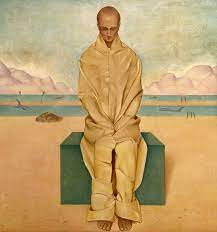
Subsequently, my works were influenced by a certain approach to the ancient world, with works animated by archaeological finds and characters from classical statuary. The 1930s, however, marked both the peak of my career, with exhibitions at the International Biennial of Vienna (in ’33) and Budapest (in ’36), and its sudden and inexorable interruption. In 1938, following the promulgation of the infamous racial laws, I, Arturo Nathan, an Italian citizen, Jewish on my father’s side, was erased from public life and was forced to interrupt my exhibition activity. To never take it back again…
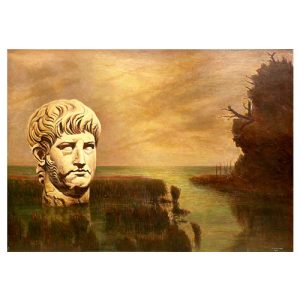
At the outbreak of the Second World War I was sent into exile in the Marche region. But even here I didn’t stop painting, even if for myself alone, as evidenced by Attesa, my last work from 1940 in which I tried to express all the loneliness I felt by depicting a man from behind, at sunset, facing the sea. After all, the search for myself had been the driving force that had brought me closer to Art and it had now become inextricably intertwined with my pictorial practice. And it is also undeniable how, from a certain point onwards, one could say with maturity, my works were linked to the world of the sea, so much so that some actually saw a “metaphysics of the sea” in them.
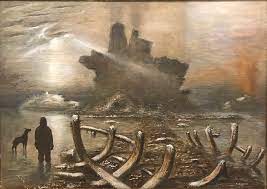
On the other hand, the sea is the symbolic element, conscious and unconscious, of that Trieste which was my home. But also the element that more than any other seemed congenial to me to represent man’s loneliness in the face of life. A loneliness that offers no escape, and behind which lies the long shadow of death. After confinement my sad fate was fulfilled. First I was interned in the Carpi prison camp, then I was deported to Germany where I died on 25 November 1944. They said of me that I was an ascetic painter, who lived in a world where the boundary between dream and reality was absent. And no one knows how much dreams were my only comfort during the last tragic part of my life. As for my artistic journey, what I feel I have understood is this: «Art has only one subject: the spirit of its author in what is profound and contained within it and in the extent to which it is part of his intimate life».